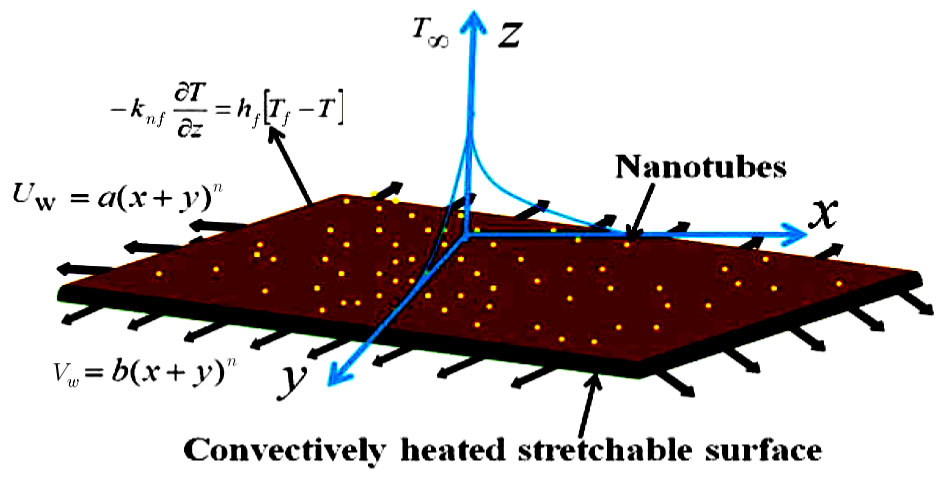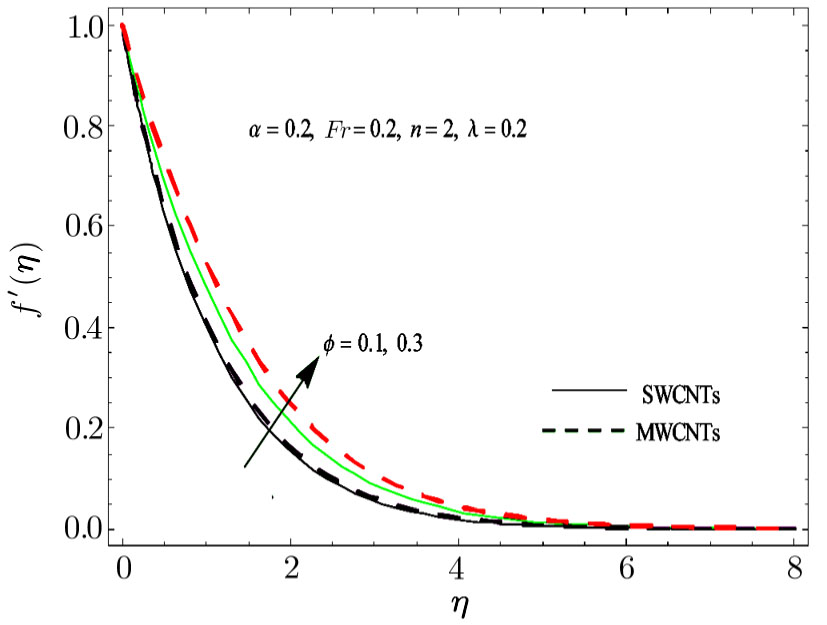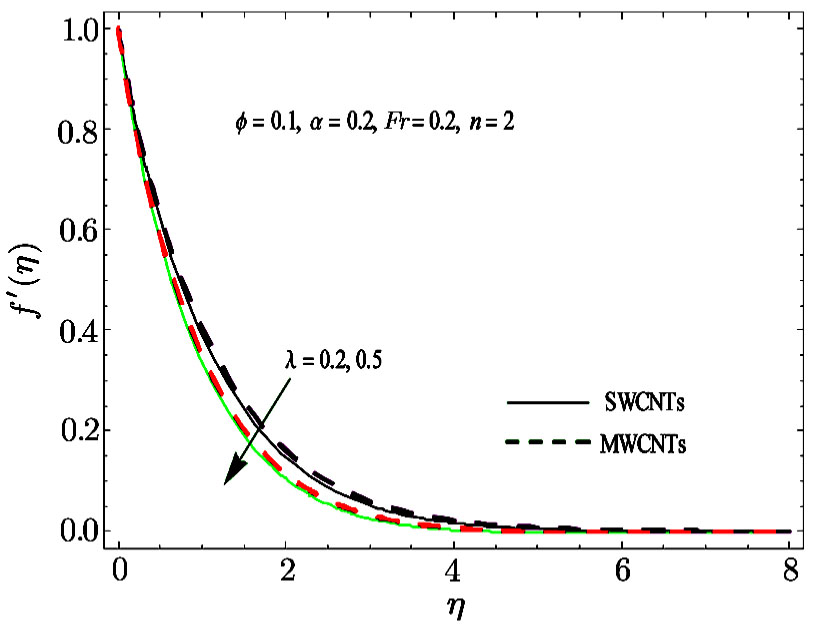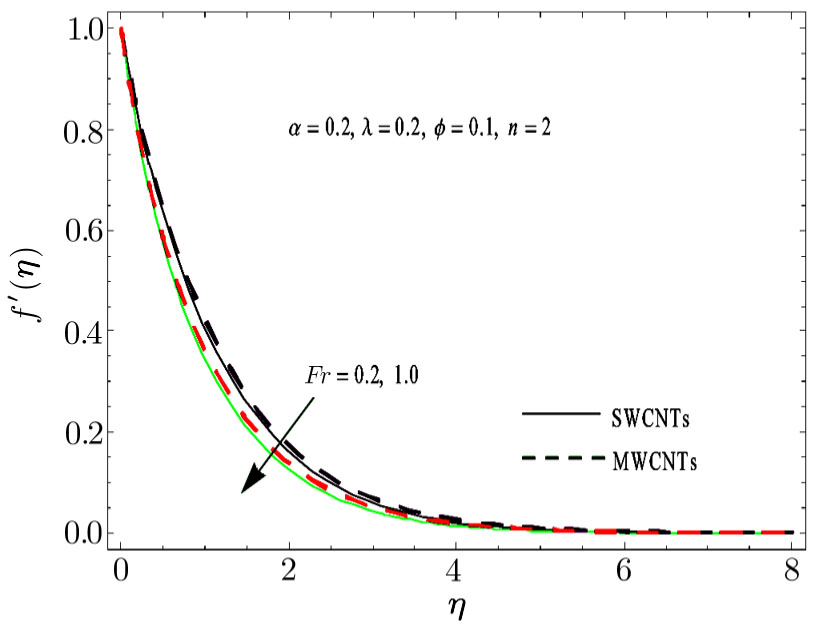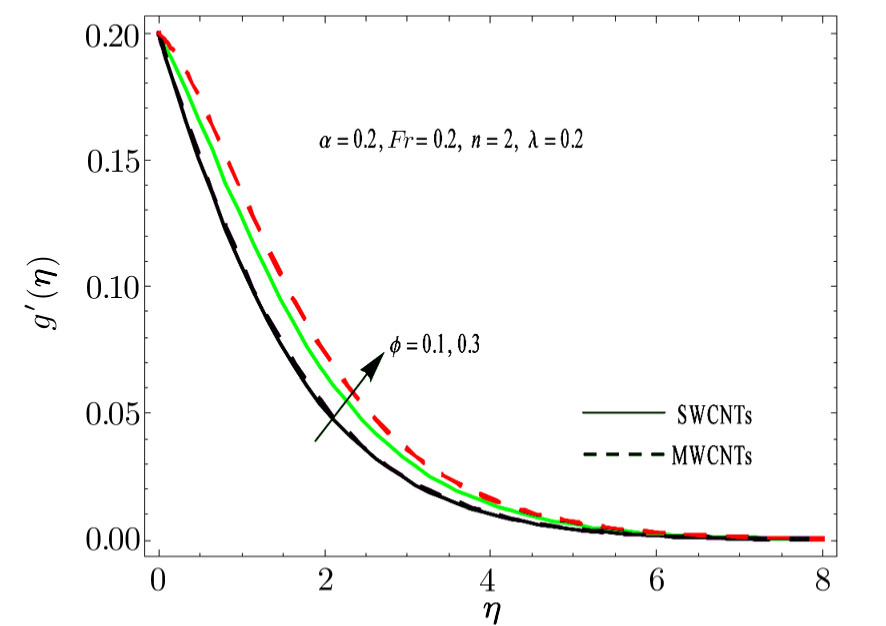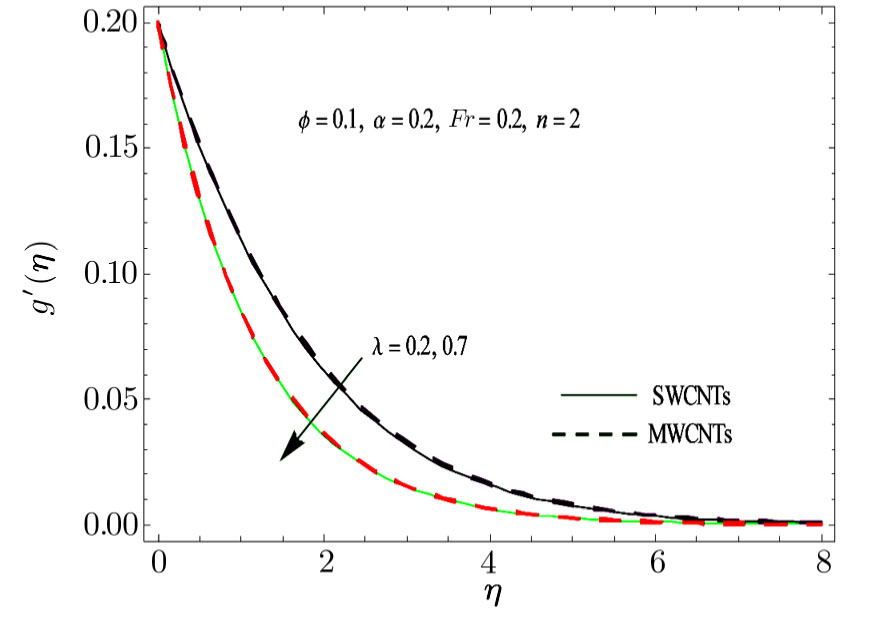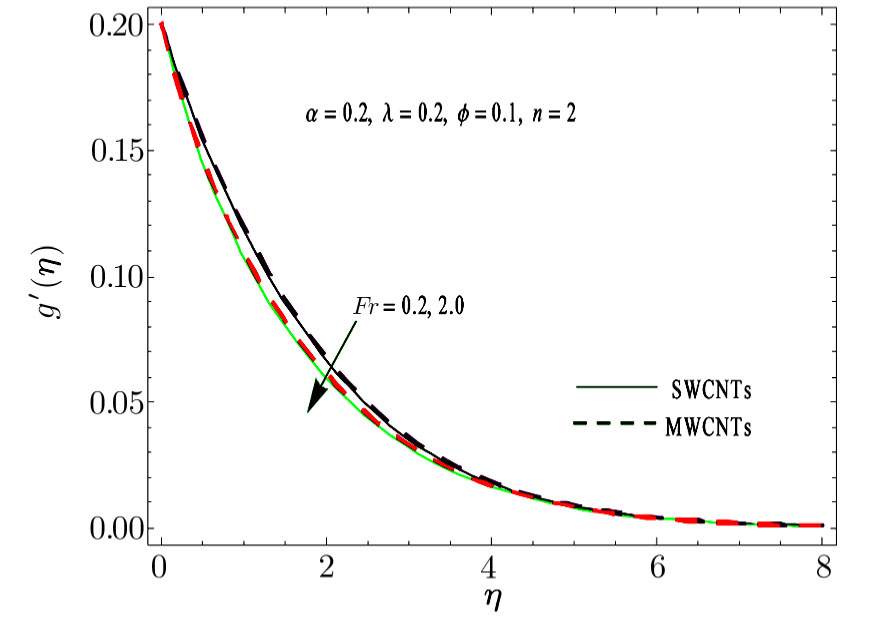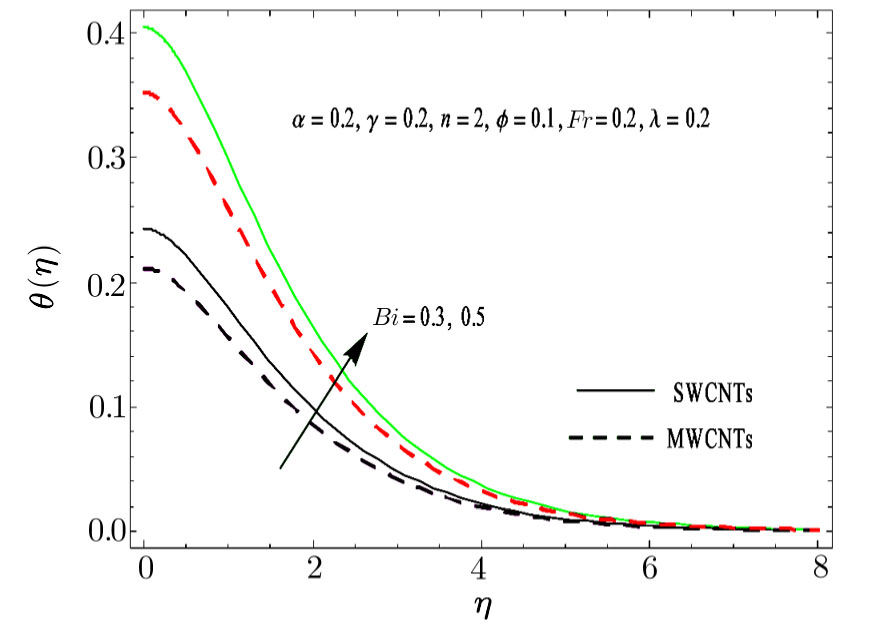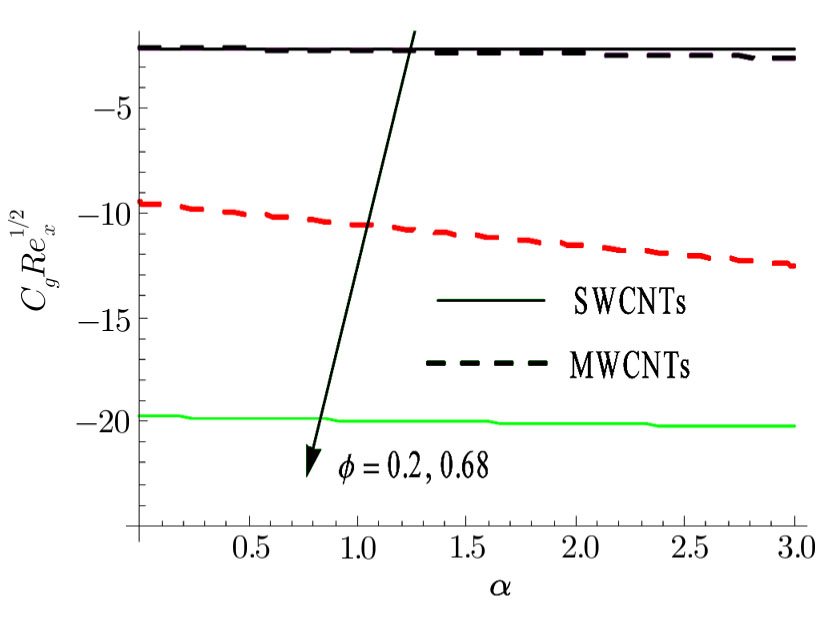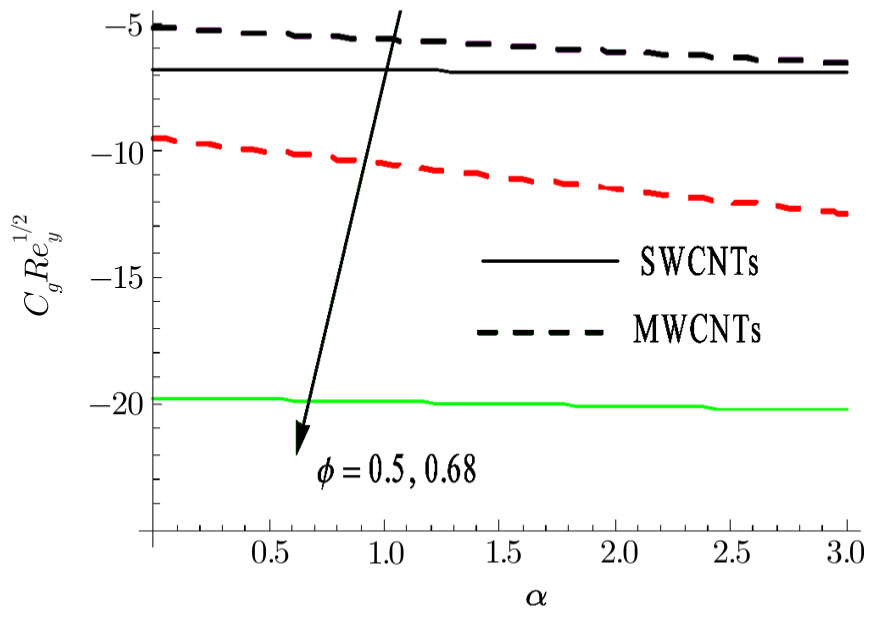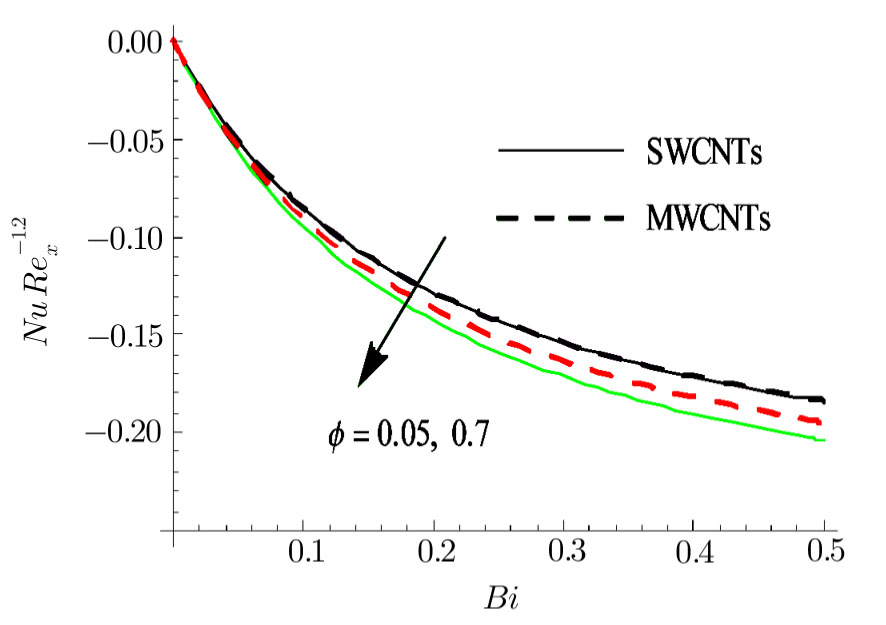† Corresponding author. E-mail:
This article manages Darcy-Forchheimer 3D flow of water based carbon nanomaterial (CNTs). A bidirectional nonlinear stretchable surface has been utilized to make the flow. Disturbance in permeable space has been represented by Darcy Forchheimer (DF) expression. Heat transfer mechanism is explored through convective heating. Outcomes for SWCNT and MWCNT have been displayed and compared. The reduction of partial differential framework into nonlinear common differential framework is made through reasonable variables. Optimal series scheme is utilized for arrangements advancement of associated flow issue. Optimal homotopic solution expressions for velocities and temperature are studied through graphs by considering various estimations of physical variables. Moreover surface drag coefficients and heat transfer rate are analyzed through plots.
Carbon nanotubes are the least difficult compound sythesis and nuclear holding arrangement of graphene sheet structures moved up in a state of chamber. Carbon nanotubes have special physical, electrical, thermal, chemical, and mechanical properties, because of the blend of their little size, tube shaped structure and colossal surface region. Contingent upon the quantity of graphene layers, carbon nanotubes have been subdivided in two sorts that is single walled carbon nanotubes (SWCNT) and multi walled carbon nanotubes (MWCNT). Anomalous heat conductivity improvement in oil-based nanofluids containing carbon nanotube is represented by Choi et al.[1] Xue[2] proposed a model in view of Maxwell hypothesis for transport properties of CNTs based composites. Aueous suspensions of multi-walled carbon nanotubes is investigated by Ding et al.[3] Few commitments toward this path can be looked into through the attempts[4–25] and different examinations therein.
Flow of liquid through permeable space assumes essential part in different mechanical applications, for example, warm protection designing, water developments in geothermal supplies, underground spreading of substance squander, atomic waste archive, grain stockpiling, upgraded recuperation of oil stores, improved oil recuperation, land carbon-dioxide sequestration, pressed cryogenic microsphere protection, coordinate contact warm exchangers, coal combustors, atomic waste storehouses, and warmth pipe innovation. For flow under low velocity and weak porosity conditions, Darcy developed a pioneering semi-empirical equation. Nonlinearity appears in semi-empirical equation for high Reynolds number which is due to increasing role of inertial forces. Forchheimer[26] predicted a modified equation namely Darcy-Forchheimer equation by introducing quadratic term in momentum equation. Muskat[27] entitled it as Forchheimer factor. Having above in view, further relevant studies on Darcy-Forchheimer flow can be looked into through the attempts[28–38] and different examinations therein.
The prime point of this endeavor is to investigate Darcy Forchheimer (DF) three-dimensional (3D) flow of carbon water nanomaterials. Flow created is a result of nonlinear stretchable surface. Heat exchange component is investigated by means of convective surface condition. Single walled (SWCNT) and multi walled (MWCNT) carbon nanotubes are considered. Xue model is implemented in mathematical modeling. The governing nonlinear system is solved by optimal homotopic approach.[39–45] Effectiveness of sundry factors on temperature and velocities fields are analyzed. Additionally skin frictions and Nusselt number are introduced by means of plots.
We consider three dimension (3D) flow of water based carbon nanomaterials (CNTs) caused by nonlinear stretchable surface in a Darcy-Forchheimer permeable space. Temperature at surface is controlled via convection, which is described by hot fluid at temperature Tf below the surface and heat transfer coefficient hf. The surface at z = 0 possessing the stretching velocities Uw(x, y) = a(x + y)n and Vw(x, y) = b(x + y)n where a, b, and n > 0 are the positive constants (see Fig.




The associated boundary conditions are:[10,31]



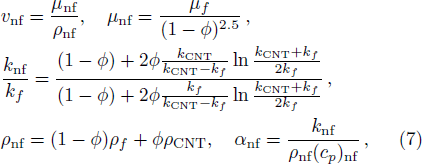
| Table 1
Physical aspects of water and CNTs.[2] . |
Using the appropriate transformations:
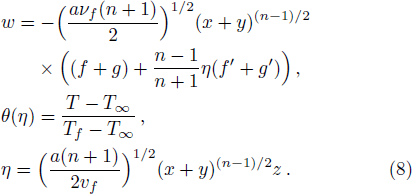









The optimal series arrangements of Eqs. (




We have solved the momentum and energy expressions with the help of BVPh2.0. These expressions contain unknown variables ħf, ħg, and ħθ. We can compute the minimum estimation of these variables by taking total error small. In the edge of HAM, these factors assume a fundamental part. That is the reason these factors allude to as convergence control factor which varies HAM from other scientific guess strategies. Keeping in mind the end goal to diminish CPU time, we have utilized average residual errors at m-th oder of guess, which are characterized by




| Table 2
Individual average residual square errors employing optimal estimations of auxiliary factors. . |
The present segment inspects impacts of various physical elements like nanoparticles fraction parameter ϕ, local porosity number λ, Forchheimer parameter Fr, ratio number α, and Biot parameter Bi on velocities f′(η) and g′(η) and temperature θ(η). Outcomes are achieved for single walled CNTs and mutli walled CNTs. Figure
It is watched that velocity field g′(η) reduces for higher λ for SWCNT and MWCNT. From Fig. 


Darcy Forchheimer 3D flow of carbon water nanomaterials (CNTs) within the sight of thermal convective condition is considered. Flow is caused by a bi-directional nonlinear stretchable surface. Optimal homotopic calculation prompts the arrangements of representing flow issue. We have seen that velocities indicate comparative pattern for local porosity number and Forchheimer parameter. An enhancement in Biot parameter exhibits stronger temperature field. Moreover skin frictions and local Nusselt number show increasing trend for higher nanoparticle fraction parameter.
| [1] | |
| [2] | |
| [3] | |
| [4] | |
| [5] | |
| [6] | |
| [7] | |
| [8] | |
| [9] | |
| [10] | |
| [11] | |
| [12] | |
| [13] | |
| [14] | |
| [15] | |
| [16] | |
| [17] | |
| [18] | |
| [19] | |
| [20] | |
| [21] | |
| [22] | |
| [23] | |
| [24] | |
| [25] | |
| [26] | |
| [27] | |
| [28] | |
| [29] | |
| [30] | |
| [31] | |
| [32] | |
| [33] | |
| [34] | |
| [35] | |
| [36] | |
| [37] | |
| [38] | |
| [39] | |
| [40] | |
| [41] | |
| [42] | |
| [43] | |
| [44] | |
| [45] |


